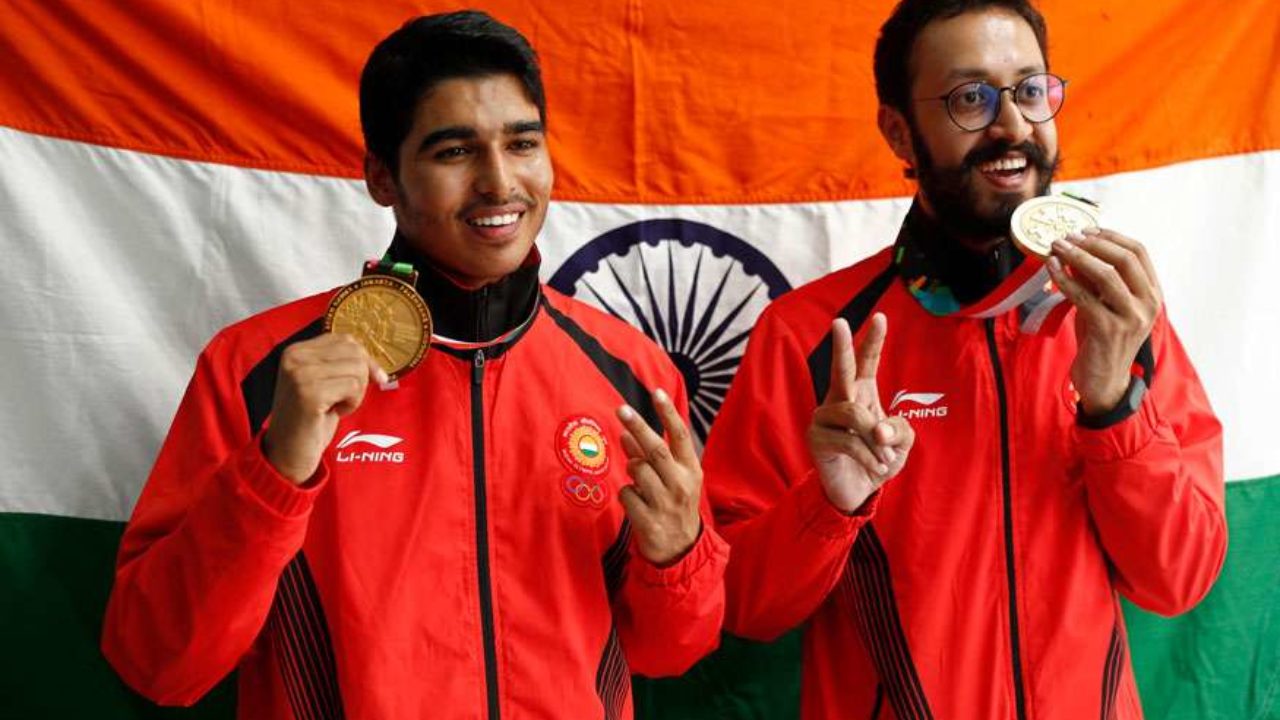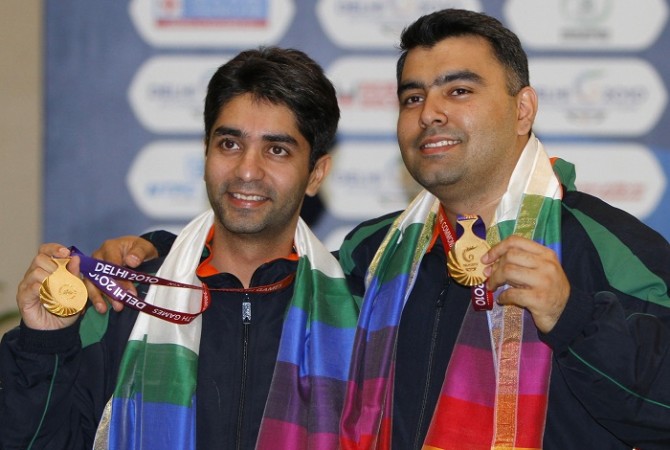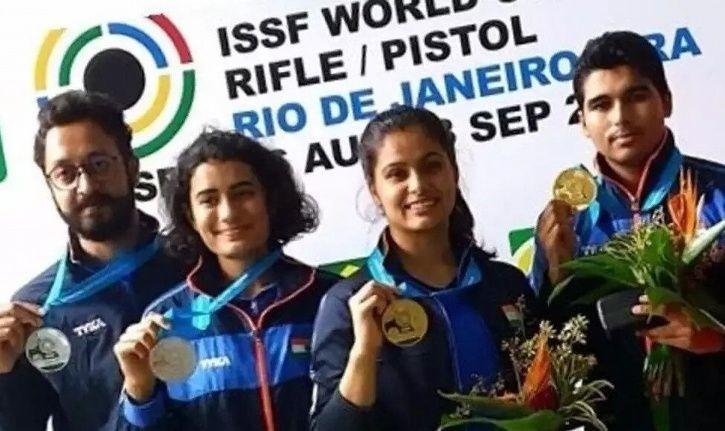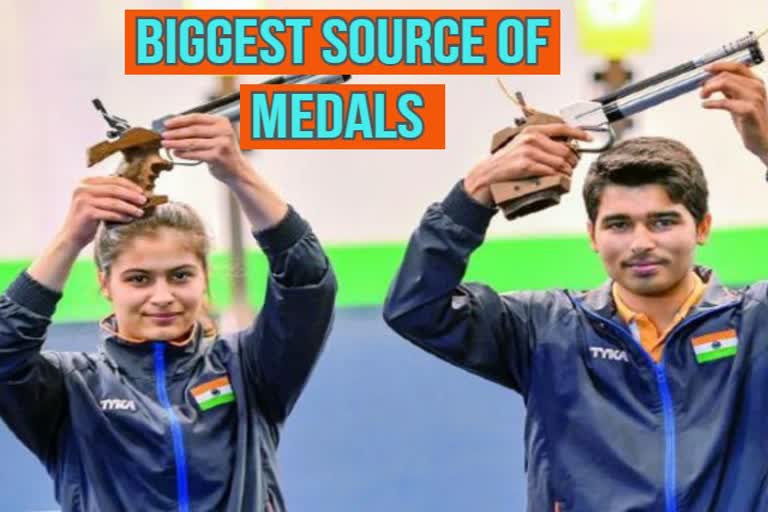Hyderabad: Shooting as a sport in India has observed an upward surge in the last two decades. The likes of Abhinav Bindra, Rajyavardhan Singh Rathore, Jitu Rai, Vijay Kumar, and Gagan Narang have been the forebearers of the sport in India for quite some time now. Their success in shooting in multisports events such as Olympics, Asian Games, Commonwealth Games, and World Championships paved way the rise of the shooting in the country.
Shooting is now India's biggest source of medals at multisport events.
There is no dearth of talent. The pace at which young Indian shooters have been clinching medals at global competitions of late has instilled the belief amongst the fans that the sport has the potential to give India maximum number of medals at 2020 Tokyo Olympics.
India has already booked nine quota places which include Yashaswini Deswal, Anjum Moudgil, Apurvi Chandela, Saurabh Chaudhary, Abhishek Verma, Divyansh Singh Panwar, Rahi Sarnobat, Manu Bhaker, and Sanjeev Rajput.

With a few more qualifying tournaments are around corner it is believed that India will land in Japan with its largest shooting contingent, increasing their chances of bagging the maximum number of medals.
In recent time, India has emerged as a force to be reckoned with in the shooting. With 16 gold, 4 silver, and two bronze from four ISSF World Cups in 2019 India sits atop, way ahead of their Chinese, American and Russian counterparts, who for decades dominated the sport at various international events.
Shooting came to prominence in the country when Rathore won the silver medal in the double trap at the 2004 Athens Olympics. Four years later his achievement was complemented by Bindra when the Delhi shooter became the only individual from India till date to win the gold medal at the 2008 Games. Vijay Kumar and Gagan Narang further maintained India's upsurge in shooting winning silver and bronze in 2012 London Olympics.
Following their triumphs in three consecutive Olympics, a fresh crop of Indian shooters have emerged in the scene, who are determined to take the sport to a new height.
But India's back to back medal haul in the Olympics was halted in 2016 when shooters failed to win a single medal in Rio de Janeiro. However, India's sudden slump in performance didn't hinder youngsters from making a big stride at global events.
Now, India has an outstanding pool of shooters, who are mostly in their 20s, and they have the potential to win the maximum number of medals for the country at international events going forward.

It will not be out of place to say that India has built a robust infrastructure to help young shooters pursue their passion. In this friendly environment, shooting as a sport is thriving here. In the recently concluded ISSF World Cup Rifle/Pistol in Rio de Janeiro, Indian shooters' success was apparent as they bagged five gold, two silver and two bronze that put them beyond the reach of Olympic sports' three most successful countries -- China, USA, and Russia.
But with success comes the burden of expectations. As renowned shooters like Apurvi Chandela, Saurabh Chaudhary, Abhishek Verma, and Manu Bhaker are being touted as India's main medal prospects in Tokyo they will have to work on absorbing pressure.
Though the future looks bright, the battle is half won for the shooters. The biggest challenge for them now is to maintain their consistency until the Olympics come. Rolling out plans and executing them in the build-up to the Tokyo 2020 will pose a serious challenge to the shooters.
Apurvi Chandela, who became second shooter from the country after Anjum Moudgil to qualify for the Olympics in women's 10m air rifle event at the Changwon World Championships in September last year, has decided to change the barrel of her 'Walther' rifle closer to the 2020 Tokyo Olympics for better consistency while also making a slight adjustment to her technique.
Similarly, 10 pistol star shooter Manu Bhaker is working on her plan to train in Germany. To get the clearance for foreign training, she will soon send a proposal to the National Rifle Association of India (NARI) to acquire fund from Sports Authority of India's Target Olympic Podium (TOP) scheme.
"Germany is the ideal location for shooters to train. You have all the facilities there…the weather and training centres. I believe it will help in my Olympics preparations," she said.
This year the 17-year-old Haryana shooter has already won four gold in four successive shooting World Cup in her pet event, 10m pistol, in New Delhi, Beijing, Munich, and Rio de Janeiro respectively.

However, Bhaker is not willing to let the success get into her mind. Rather, she is working on technique as well as the mental aspect to keep herself in the zone. Yashaswini Singh, who became ninth Indian to qualify for Olympics from shooting, said her primary focus leading up to the Games would be to consistently achieve minimum qualification scores (MQS).
"Training wise, it's all good. But I have to keep improving my MQS. The competition is very tough in the 10m air pistol. So I have to consistently achieve good scores. For that, I would be looking to compete at every possible tournament up until the Games," she stated.
From the very beginning of this millennium, India's performance in the CWG has been outstanding as shooting gave India 11 medals in 2002, 16 in 2006,14 in 2010 and 17 in 2014 respectively.
In 2018 Gold Coast Commonwealth Games India has won 16 medals, which is 24 per cent of the contingent's total medal haul, 66. India's medal tally in the shooting was also the most by any country in the Games. So, after the CWG high Indians' performance in the 2019 ISSF World Cups is a testimony of their ability and consistency. This is a great sign, especially because India had finished third behind China and South Korea with nine medals in 2018 Asian Games.


